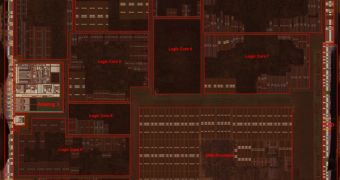As expected, the teardown of an iPhone 4G prototype in Vietnam has revealed at least one important find, with respect to the chips Apple is using in its next generation of smartphones. Legible part numbers interpreted by the tech-savvy people at iFixit reveal that Cupertino is using the same A4 chip that powers the iPad, in its new iPhone 4G.
“Today’s photos from Vietnam of a leaked iPhone 4G prototype contain legible part numbers revealing new iPhone’s processor: the Apple A4,” a blog post over at iFixit reads. The author continues, outlining the following:
“The silkscreen on the production A4 reads: - APL0398 339S0084 YNL215X0; - K4X2G643GE N26CGM0T.
“The leaked prototype has these markings: - APL0398 339S0084 YNE07423; - K4X2G643GE GSA1400A.”
The author goes to note that, “The two numbers that are different are likely manufacturing numbers (each lot of chips is stamped with a unique number to track them through the supply chain).” iFixit’s man claims that the numbers giving away the chip’s identity are “APL0398 339S0084,” which led it to believe the iPhone was indeed powered by the A4 silicon introduced by Apple last year, and “K4X2G643GE,” which reportedly refers to the two 256 MB DRAM dies manufactured by Samsung.
The repair shop suggests the A4 chip was a logical move for Apple, saying, “Our engineers are not surprised by this finding. We were very impressed by the extraordinarily low power consumption of the iPad, and remarked at the time that its power consumption and board design was much more in line with handheld devices than laptop computers.”
iFixit points out fans to an extensive look at the iPad’s A4 chip it analyzed a while ago in conjunction with Chipworks, saying, “Our Apple A4 teardown goes into detail on how the A4 is constructed.” Two separate reports look closer at the Apple A4 silicon and how it was “fabbed by Samsung in their 45-nm process,” as well as an A4 Layout Analysis (which can be observed in the picture included in this article).

 14 DAY TRIAL //
14 DAY TRIAL //